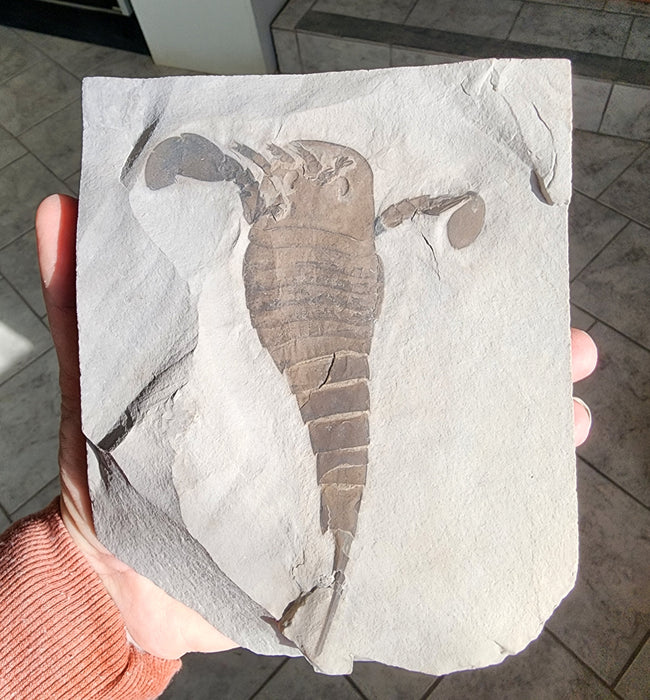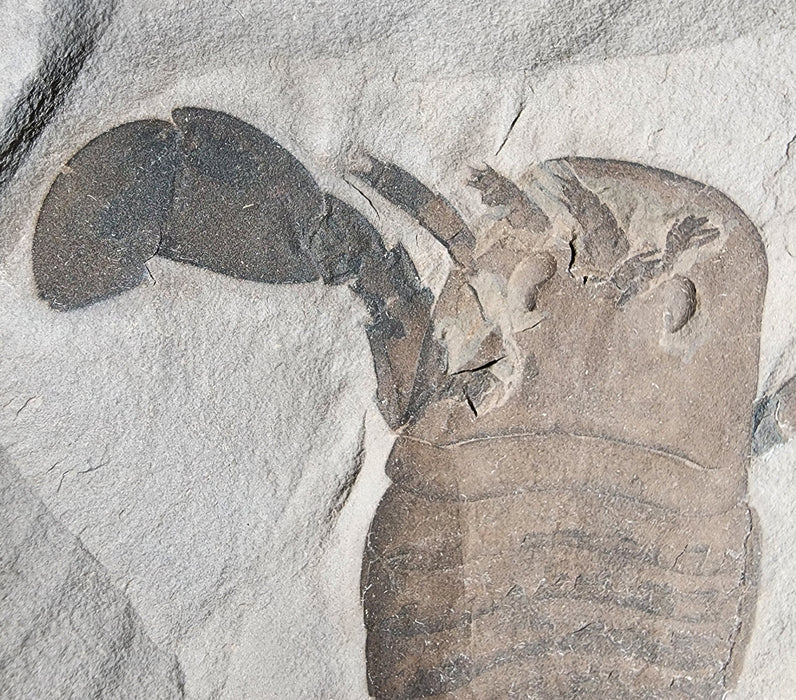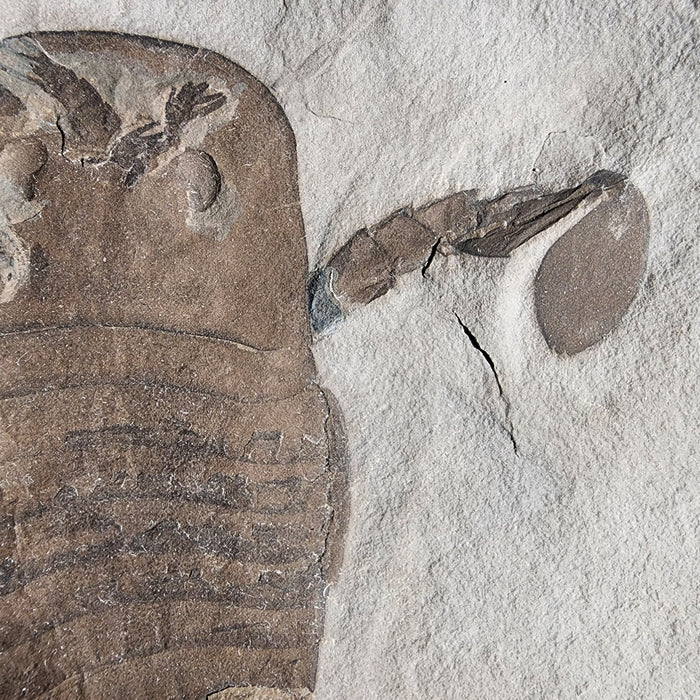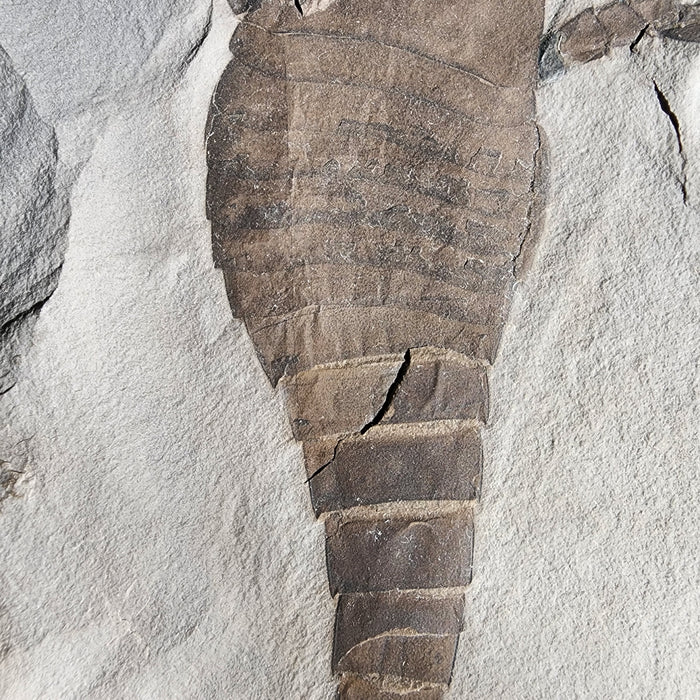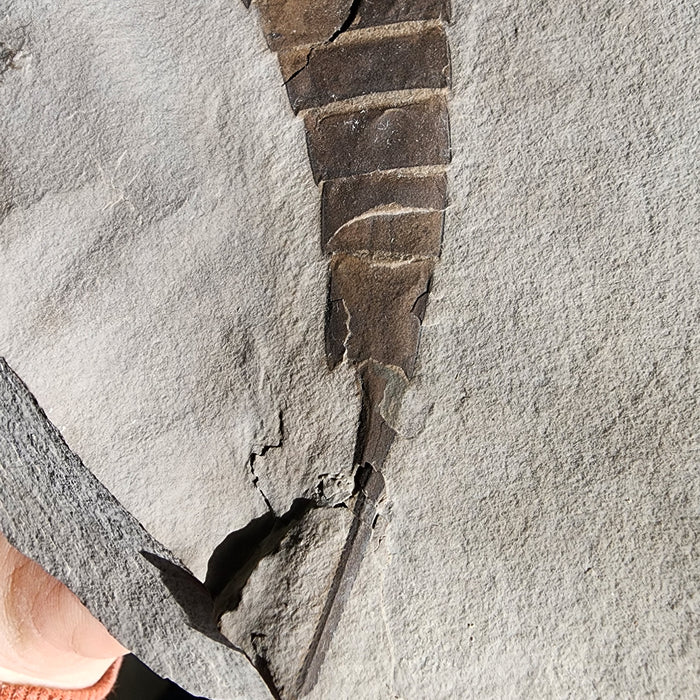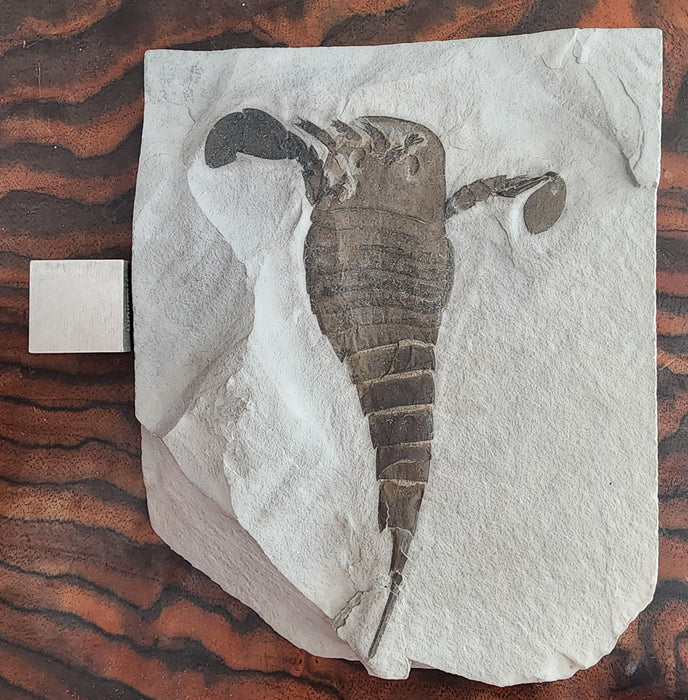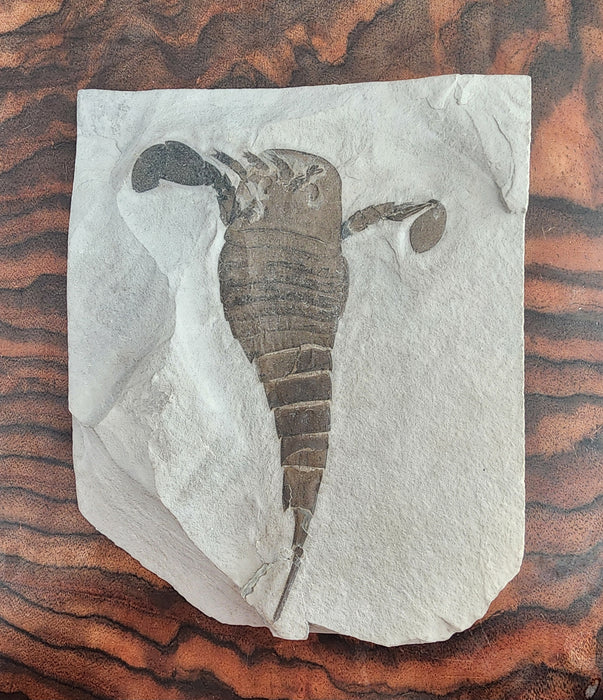
Eurypterid (Sea Scorpion) | Eurypterus remipes | New York
Species: Eurypterus remipes
Age: Upper Silurian ~420 m.y.o.
Formation: Bertie Dolostone of the Fiddlers Green Formation, Phelps Member
Location: Herkimer County, N.Y.
This Eurypterus remipes specimen has an intact telson and impeccable preservation.
Specimen measures approx: 6" x 4"
Matrix measures approx: 5.75" x 7.25"
Eurypterids, commonly referred to as "sea scorpions," represent an extinct lineage of aquatic arthropods classified within the order Eurypterida. These organisms first emerged in the fossil record during the Darriwilian stage of the Middle Ordovician period, approximately 467.3 million years ago. As one of the most diverse and ecologically significant arthropod groups of the Paleozoic era, eurypterids occupied a variety of marine and freshwater environments, displaying a wide range of morphological adaptations suited for predation, scavenging, and benthic lifestyles.
Throughout the Silurian and Devonian periods, eurypterids experienced significant evolutionary radiation, leading to the development of numerous families and genera with varying body sizes, appendage structures, and ecological roles. Some species attained substantial proportions, with the largest members, such as Jaekelopterus rhenaniae, reaching lengths exceeding two meters, making them among the largest arthropods to have ever existed. Their exoskeletons, often exhibiting complex ornamentation, provided structural support and protection, while their specialized appendages facilitated both efficient swimming and terrestrial locomotion in some taxa.
However, despite their evolutionary success, eurypterids faced substantial challenges during the Late Devonian extinction event, which profoundly impacted marine biodiversity. This biotic crisis led to a marked decline in eurypterid diversity and abundance, restricting their distribution primarily to brackish and freshwater habitats in the Carboniferous and Permian periods. By the time of the Permian–Triassic extinction event, approximately 251.9 million years ago, eurypterids had become increasingly rare. Whether they persisted until this catastrophic event or succumbed to earlier environmental shifts remains a subject of ongoing paleontological investigation. Regardless, by the dawn of the Mesozoic era, eurypterids had vanished from the fossil record, marking the end of a once-thriving group of Paleozoic arthropods.

